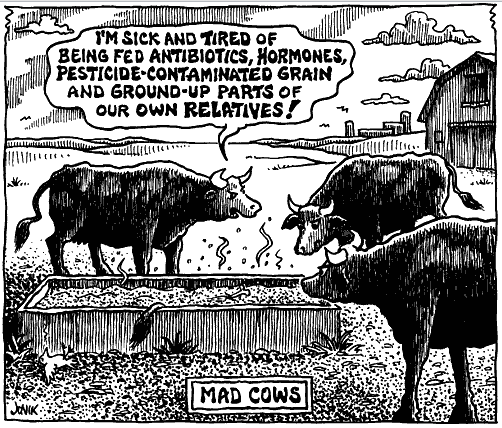A grab and go breakfast
Jul 9th, 2011 by moniquewong

“Our busy lives sometimes forces us to eat the wrong things at the wrong times.” Yeup, I agree. Like cup noodles 11pm at night. But a late night plus an early wake up call means that I get ready in the morning, grab an Activia and a spoon, and I head out to the bus stop.
In this post, I’m going to look into yogurt production. I can’t say it’s something that’s always interested me, but we’ve covered transportation and packaging already, so yogurt’s an interesting choice. (And packaging is simple! – more oil to make the plastic!)
Now, the extent of my knowledge of yogurt is that it comes from milk. The milk goes through a fermentation process where bacteria is added? or somehow develops, and le voilà! And it turns out I’m not too far off.
Yogurt in its production process is heated to around 80°C to rid the milk of bacteria before bacteria is added at 45°C. This temperature is maintained for 4-7 hours for fermentation. Now, I was unable to find out where Danone (the company that owns the Activia brand) makes their yogurt, so I can’t venture a guess about the energy origins of the operations involved. To keep a lot of milk at 45°C for 7 hours must mean a lot of electricity though. And nowadays, yogurt isn’t even made where the milk is produced. It’s made in a central processing plant a refrigeration process and a truck-ride away (more gas!)
Let’s go a bit further back into the raw materials of yogurt. The milk and the cow.
From our course readings – Power Steer in the New York Times by Michael Pollan – we know that this cartoon is not far from the truth. Hormones, vaccines and antibiotics are simply being pumped into cows since their close living quarters and unnatural diet of grains makes them get sick.
Not only is it unnatural, this grain that’s used to feed cows is an environmental bad as well. The corn needed to make this grain is grown using massive quantities of petrochemicals as fertilizers. In fact, Pollan claims that 1.2 gallons of oil are used in every bushel of corn. Logically, with the ever increasing price of oil, this would make corn and hence cows and milk prohibitively expensive. The United States doesn’t operate under a logical system however. Corn makes it into most livestock’s food because of federal subsidies that makes each bushel of corn 50 cents less expensive than the cost of growing it. Now we can think 50 cents, not too much, but this actually is more than 20% (22 to be exact) of how much corn is sold for – $2.25.
The monoculture environments that corn is grown in creates secondary effects. With each harvest, soil is degraded farther and farther and with each year, more petrochemicals are needed to feed the ground so that the ground can feed our food. As Manning suggests in his article, “5.5 gallons of fossil energy are needed to restore a year’s worth of lost fertility to an acre of eroded land.” And where does this even go? Nitrogen fertilizers go off and reacts chemically with its surroundings, forming nitrous oxide and eventually acid rain. It becomes runoff into rivers leading to big algae blooms that in turn destroy the surrounding marine life.
All just to feed some cows for their milk.
Source:
Michael Pollan, “Power Steer,” New York Times 31 March 2002.


